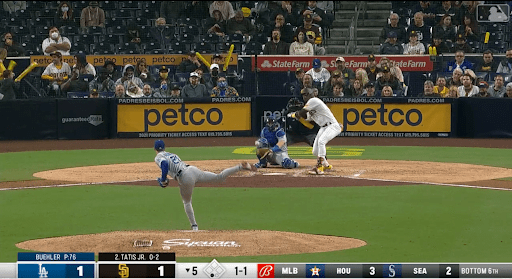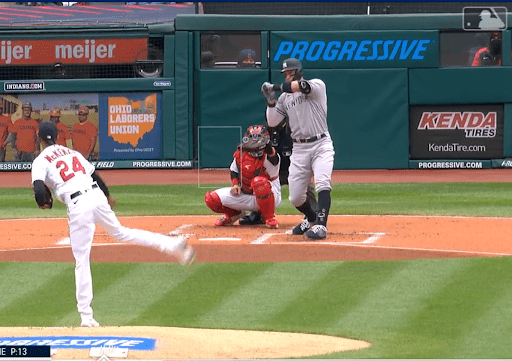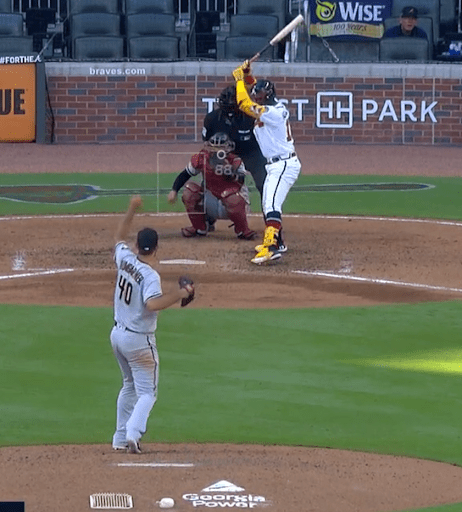How to Develop a Game Plan Without Advanced Scouting Reports

When preparing for an upcoming series as a pitching staff, the more information, the better. But unless you’re in professional baseball or at a Division I school, oftentimes you are left with the stat line from the league website. In the absence of advanced scouting reports and batted ball data, coaches and staff must look elsewhere to formulate a game plan.
One place to look is directly at hitters’ swings. Reading those swings can provide the necessary context on how to attack the team’s lineup.
Oftentimes while coaching junior college baseball, I’d pull the starting pitcher and probables for that day to watch the opposing team’s batting practice. We’d watch round by round and attempt to pick out flaws and holes within the swings, as well as how hitters might cheat to certain pitches.
From there, we’d discuss how we could attack those holes based on that pitcher’s arsenal. In addition to watching swings, we’d look for how the ball was coming off of the bat. Does the hitter slice pitches away? Is he getting tied up on inside pitches during batting practice? Listed below are some of the things we looked for.
Common Swing Flaws
A common swing deficiency we saw was a pushy swing. The most obvious thing you’ll notice with this swing pattern is the hands working before the hips, or “not using the lower half.”
This could be the result of the hitter not loading their scap, which doesn’t allow for the top hand arm to drop down into their slot to create a level swing. These guys could also be starting with their hands too close to their body, making it tough to create space and load the scap.
Additionally, they could also have some negative side bend in their stance, meaning they’re leaning towards the pitcher, forcing the hands to travel down and create a negative attack angle.
As a result of these patterns, these hitters will make most of their contact out in front and will struggle to drive the ball to the opposite field. Because their hands commit early, sliders could be a good fit in two strike counts. They also could be susceptible to pull-side ground balls.
Feeding fastballs and changeups in could feed into their often-negative attack angles. These guys must have good timing and be very in tune with their swing in order to catch a ball flush.
Another common thing we saw was guys that pulled off the ball. This might look like a guy pulling his bat out of the hitting zone. These hitters’ torsos will typically pull up and across during the swing. Pulling off could also be a result of their hips over-rotating.
These guys will usually cheat to inside fastballs, and tend to do most of their damage in that area. They may also feast on hanging cutters and sliders, as these pitches tend to match their bat path.
Their point of contact will be near the front of or on the plate, as they struggle to stay through the baseball. Pitches with horizontal movement (sliders, cutters) located away are usually tough for these guys to get the barrel to.
The last most common thing we saw were hitters who collapsed. These guys are usually trying to get big and lift the ball, which can present some holes. These guys typically have a taller stance, and stand up through their swing. They’ll have too much side bend and dump the barrel with their top hand, creating a vertical bat angle.
This swing path will create points of contact out in front of the plate, and will top spin balls when they’re early. Look for a majority of balls to be in the air on their pull side.
When they miss, they’ll typically flare and slice balls to the opposite field. Due to their vertical bat path, these guys will most likely feast on fastballs down, so hold off putting in your sinker guy and maybe find a guy on staff with above average vertical break and attack the top of the zone.
Curveballs in the zone can also reside in the damage zone for these hitters.
Situational Pitching
While these are all common things to look for in a hitter’s swing, we have to remember that there is no textbook way to do things. Situational hitting also influences a hitter’s swing path, and he may not show you that during batting practice.
Oftentimes, it is a common approach for a team to preach going the other way (for right-handed hitters) with a runner on second base to move him over. In this case, giving the hitter something on the outer half would play right into the scheme.
With a runner on third, hitters are typically looking to get something elevated so the runner can tag up and score.
Understanding your arsenal and seeing swing characteristics of the hitter can help you prevent this from happening.
You could also look for swing flaws that only show up in certain counts. Does the hitter collapse in 2-0 counts? He could be trying to elevate and get big. Does he become pushy in 0-2 counts? Putting the ball in play could be a team philosophy. These are all things to consider.
In-Game Takes
Reading in-game takes can also be revealing.
In this picture, we see Fernando Tatis Jr. “biting.” Seeing a hitter bite on a breaking ball on the outer half of the plate could indicate that the hitter was looking for a fastball away, recognized it was a breaking ball and then held up his swing.

In this picture we can see that Aaron Judge couldn’t get a swing off on this pitch inside. This could indicate he’s looking for something lower or perhaps off the inside part of the plate.

And in this last picture, seeing Ronald Acuña Jr. react in this way to a fastball inside could indicate he was looking for something away and wasn’t prepared to see a fastball inside.

We have to remember that hitting and pitching are complex, and there is no textbook approach to either of the two.
The Vladimir Guerrero swing pictured below resulted in an RBI and him standing on second base.
At times, you will throw your best pitch with perfect command, and it will get mashed. At other times, you’ll completely miss your location, or throw a bad pitch that the hitter just misses. While everything we’ve covered can give you clues on how to get hitters out, you have to understand that shit happens.
Written by Jake Witt, Richard Prigatano, and John Soteropulos
Comment section